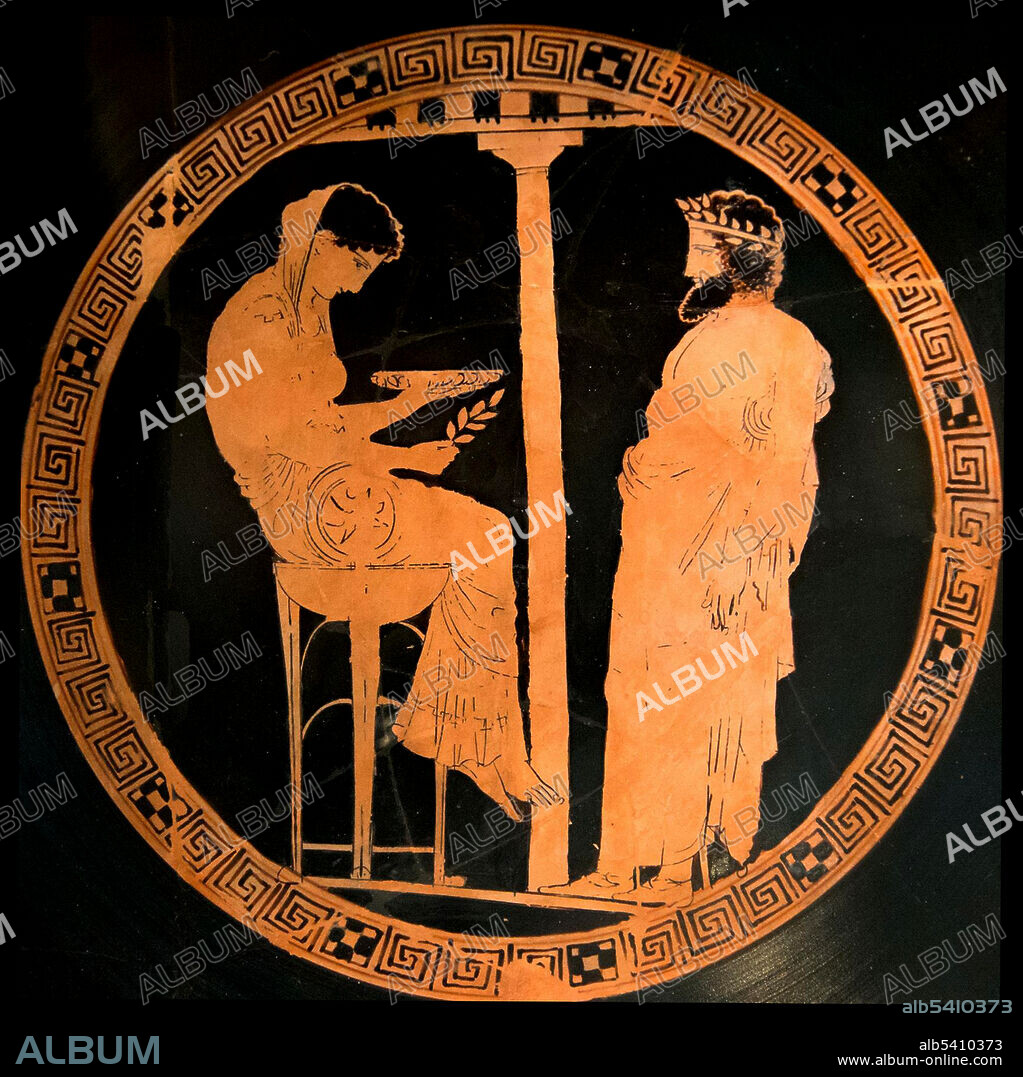alb5410373
King Aigeus Consulting the Pythia, Oracle of Delphi

|
Añadir a otro lightbox |
|
Añadir a otro lightbox |



¿Ya tienes cuenta? Iniciar sesión
¿No tienes cuenta? Regístrate
Compra esta imagen.
Selecciona el uso:

Título:
King Aigeus Consulting the Pythia, Oracle of Delphi
Descripción:
Traducción automática: Un kylix ático de figuras rojas de Vulci (Italia), 440-430 a. C., que representa al rey Egeo frente a la Pitia en el Oráculo de Delfos. La pintura de cerámica de figuras negras es uno de los estilos de pintura en los jarrones griegos antiguos. La Pitia era el nombre de la suma sacerdotisa del Templo de Apolo en Delfos, que también servía como oráculo, comúnmente conocido como el Oráculo de Delfos. La Pythia se estableció a más tardar en el siglo VIII a. C. y fue ampliamente reconocida por sus profecías inspiradas en el espíritu del dios (o entusiasmo). La sacerdotisa pitia se destacó a fines del siglo VII a. C. y continuaría siendo consultada hasta el siglo IV d. C. Durante este período, el Oráculo de Delfos fue el oráculo más prestigioso y autorizado entre los griegos, y fue sin duda la mujer más poderosa del mundo clásico. (recortado y limpio)
An Attic red-figure kylix from Vulci (Italy), 440-430 BC, depicting King Aigeus in front of the Pythia at the Oracle of Delphi. Black-figure pottery painting is one of the styles of painting on antique Greek vases. The Pythia was the name of the high priestess of the Temple of Apollo at Delphi who also served as the oracle, commonly known as the Oracle of Delphi. The Pythia was established at the latest in the 8th century BC, and was widely credited for her prophecies inspired by being filled by the spirit of the god (or enthusiasmos). The Pythian priestess emerged pre-eminent by the end of 7th century BC and would continue to be consulted until the 4th century AD. During this period the Delphic Oracle was the most prestigious and authoritative oracle among the Greeks, and she was without doubt the most powerful woman of the classical world. (cropped and cleaned).
Crédito:
Album / Science Source
Autorizaciones:
Modelo: No - Propiedad: No
¿Preguntas relacionadas con los derechos?
¿Preguntas relacionadas con los derechos?
Tamaño imagen:
4200 x 4205 px | 50.5 MB
Tamaño impresión:
35.6 x 35.6 cm | 14.0 x 14.0 in (300 dpi)
Palabras clave:
ANTIGUO • ARTEFACTO • DELFOS • FAMOSA • FAMOSO • GRIEGO • HISTORIA • HOMBRE • JARRON • MUJER • ORACULO DELFOS • PERSONALIDAD • PROFETA • RELIGION • RETRATO DE HOMBRE • S. V AC • S. V AC. • SIBILA • SIGLO V A. C • SIGLO V A. C. • SIGLO V AC • SIGLO V AC. • SILUETA
 Pinterest
Pinterest Twitter
Twitter Facebook
Facebook Copiar enlace
Copiar enlace Email
Email
